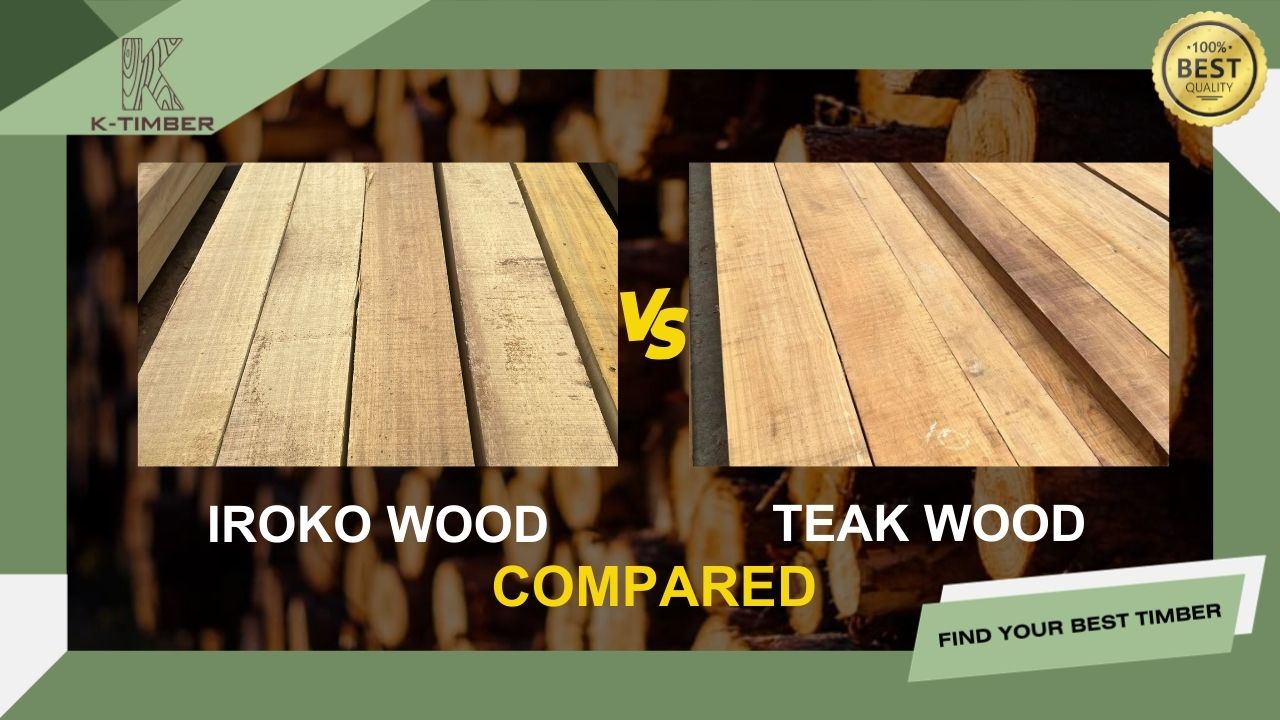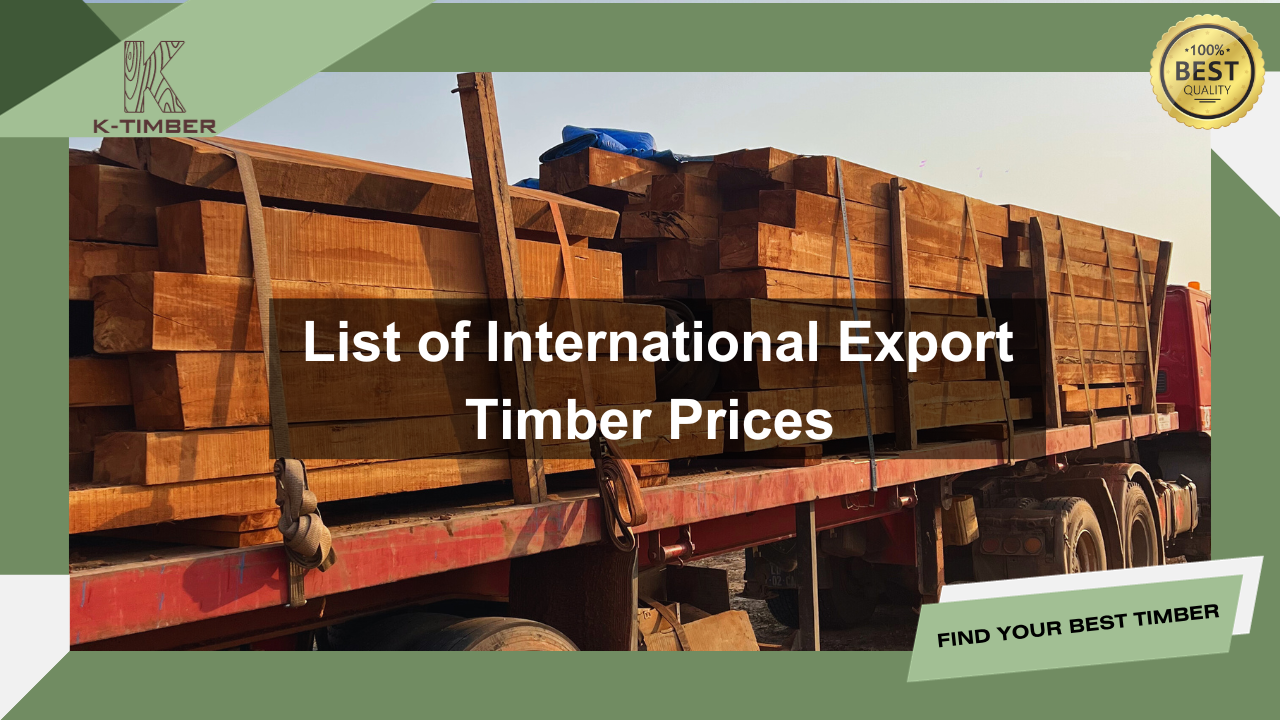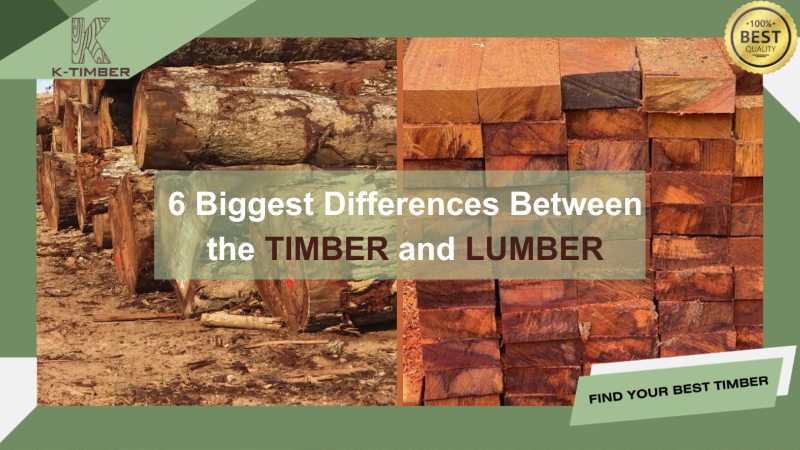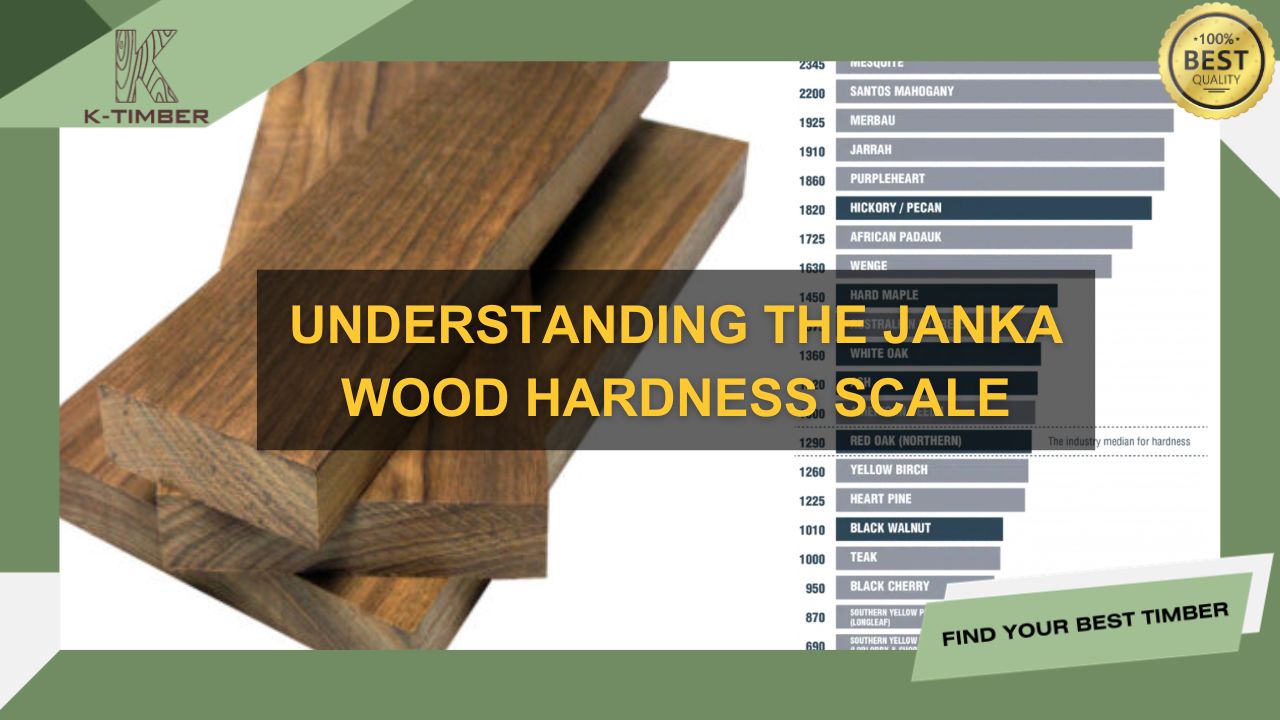African wood is famous for its large size and top quality, making it the top choice for markets such as the EU, US, Asia,… In this article, as a wood expert with 20 years of experience, I will provide you the information about the top 10 most exported African wood types, from data in 2023.
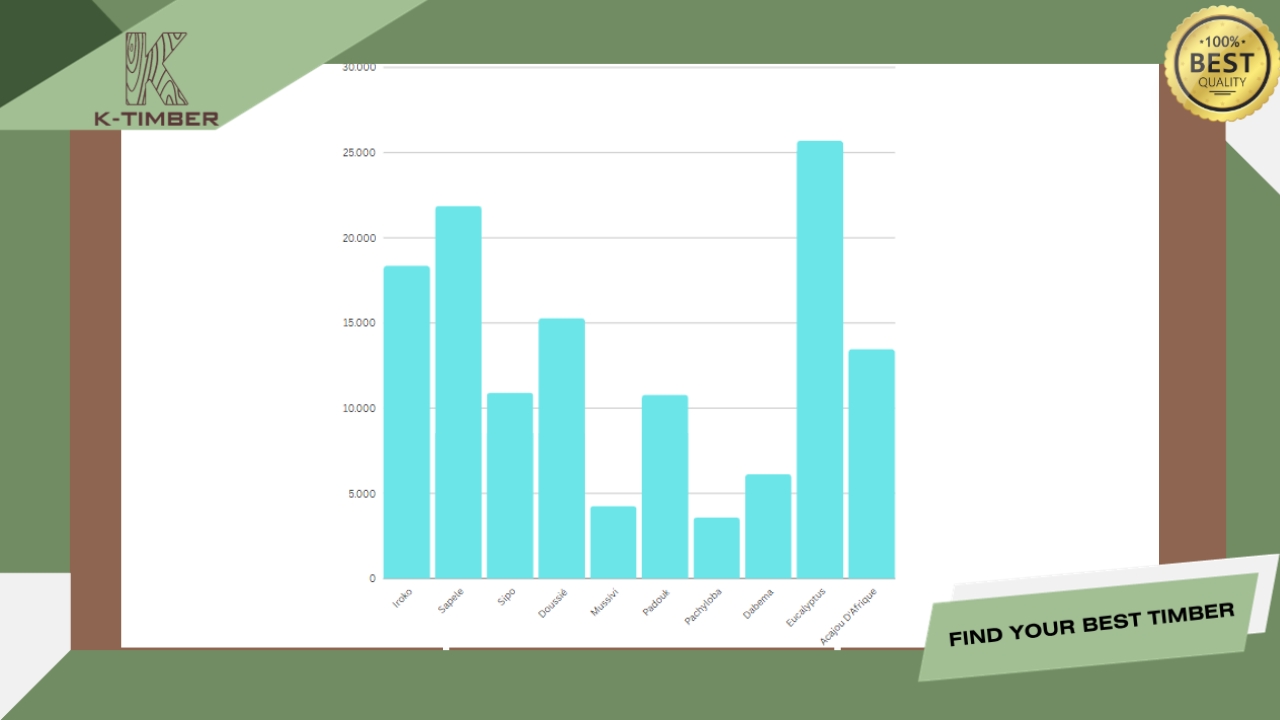
Table of Contents
Iroko
Iroko, also known as African teak, is highly esteemed as one of the top African wood exports. Iroko is classified as a hardwood with a density of 650-850 kg/m3 and Janka hardness of 1,260 Ibf. For Iroko, heartwood is usually a yellow to golden or medium brown, with color tending to darken over time. The heartwood may be easily distinguished from the pale yellow sapwood. Iroko hardwood is often referred to as “African teak” due to its resemblance to true teak wood in both appearance and properties
- Scientific name: Chlorophora Excelsa, Chlorophora Regia – Family: Moraceae
- Most Popular Use: Joinery, furniture, boat decking and cabinetwork
- Price: 500 USD/ m3

Sapele
Sapele is a prominent African hardwood, often compared to Mahogany. Belonging to the same family as Mahogany, Sapele is distinguished by its remarkable density and hardness, with a density ranging from 700-900 kg/m3 and a Janka hardness of approximately 1,410 Ibf, making it notably durable and resistant to wear. Sapwood is pale yellow, heartwood is medium to dark reddish brown, and both have a medium texture and great luster.
- Scientific name: Entandrophragma Cylindicum
- Most Popular Use: Musical instruments, Turned objects and Veneer
- Price: 500 USD/ m3

Sipo
Sipo, often referred to as Utile, is a hardwood with a density that ranges from 620-880 kg/m3 with a Janka hardness value of about 1,180 Ibf, indicating its strength and durability. Sipo heartwood usually has a medium to dark reddish-brown color, often with a purple tint, and it gets progressively deeper and richer as it ages. In contrast, the sapwood is lighter in color and clearly distinguished from the heartwood. It is known as a great substitute for mahogany because of its matched grain and moderate to high natural shine.
- Scientific name: Entandrophragma
- Most Popular Use: Furniture, boatbuilding, flooring
- Price: 450 USD/m3

Doussié
Doussié is a well-known wood export from Africa that is valued for its strength and beauty. It is dense, weighing 650-850 kg/m3, and has a Janka hardness of around 1,260 lbf, which indicates that it is a hardwood. Doussié heartwood usually has a rich reddish-brown color, but over time, it may darken to a deeper brown. Its sapwood, on the other hand, is typically found far from the heartwood and is typically a softer yellow to white color.
- Scientific name: Afzelia Africana (Caesalpiniaceae)
- Most Popular Use: Shipbuilding, joinery, cabinetwork
- Price: 800 USD/m3

Mussivi
Mussivi, a lesser-known but highly prized African hardwood, is becoming more well-known for its superior quality and adaptability to a wide range of woodworking applications. Mussivi is a hardwood with a density of 700-900 kg/m3 and a moderate Janka hardness grade, both of which point to its durability. Mussivi heartwood usually has a light to medium brown color, sometimes with a reddish or purple tint, and it darkens a little bit with age. Typically, the sapwood is paler and easier to separate from the heartwood.
- Scientific name: Guibourtia Coleosperma
- Most Popular Use: Shipbuilding, joinery, cabinetwork
- Price: 1,000 USD/m3

Padouk
Padouk is a highly prized hardwood from Africa and portions of Asia, noted for its vibrant color and strength. Its density of around 650-850 kg/m3 places it in the hardwood group, and its strength is attested to by its Janka hardness value of about 1,710 lbf. The heartwood of padouk is especially prized for its rich, deep red or orange-red color, which eventually turns purplish-brown. The sapwood, on the other hand, is much lighter, typically being white or light yellow.
- Scientific name: Pterocarpus soyauxii
- Most Popular Use: Veneer, flooring, turned objects, musical instruments, furniture
- Price: 600 USD/m3

Pachyloba
Pachyloba is a premium hardwood that comes from the rainforests of West and Central Africa. Its strength and beauty are making it more and more popular in the world market for timber. The density of this hardwood ranges from 650–850 kg/m3, and its Janka hardness value is around 1,900 lbf, suggesting that it is extremely strong and resilient. Pachyloba heartwood has a stunning golden to reddish-brown hue, sometimes with darker streaks, and it usually gets deeper and richer with age. This is contrasted with the sapwood’s paler, often pale yellow hue.
- Scientific name: Afzelia Pachyloba
- Most Popular Use: Furniture, veneer, boatbuilding
- Price: 820 USD/m3
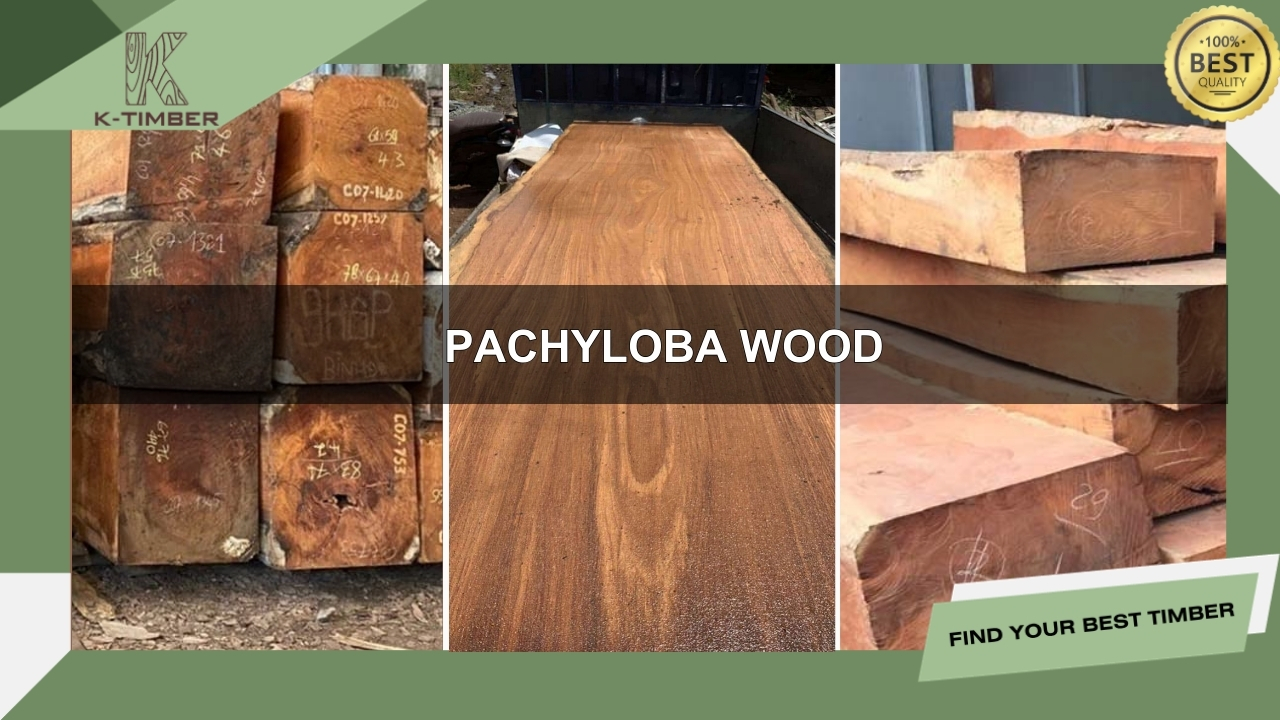
Dabema
Dabema is a well-known hardwood that comes from West African tropical rainforests. It is becoming more and more popular in the world timber market because of its strength and beauty. This type of wood has a density that is moderate to high, usually 700–800 kg/m3, and a Janka hardness value of 1,400–1,500 lbf, which indicates how strong and resistant to wear it is. Dabema heartwood has a warm, golden to reddish-brown hue with lighter streaks; as it ages, it may become somewhat darker. The sapwood differs significantly from the heartwood in color, with the former being significantly lighter. The grain is typically straight but may occasionally interlock.
- Scientific name: Peptadeniastrum africana
- Most Popular Use: Furniture, veneer, boatbuilding
- Price: 450 USD/m3

Eucalyptus
Originally from Australia, Eucalyptus is a fast-growing, adaptable softwood that is now grown all over the world for its oil, wood, and medicinal qualities. Depending on the particular variation, this wood species’ density is 600–700 kg/m3, and its Janka hardness rating can range from moderate to high, typically between 600 and 800 lbf. The sapwood of eucalyptus is usually lighter in color and easily distinguished from the heartwood, which is red to reddish-brown.
- Scientific name: Eucalyptus globulus Labill.
- Most Popular Use: Tables, chairs, construction timber
- Price: 280 USD/m3

Acajou D’Afrique
African mahogany, or Acajou D’Afrique, is a highly prized hardwood that comes from the rainforests of West and Central Africa. This wood has a Janka hardness grade of around 1,100 to 1,300 lbf and is recognized for having a medium density 540-600 kg/m3. This makes it a sturdy but manageable material. Acajou d’Afrique heartwood has a stunning spectrum of hues, ranging from a pale pinkish-brown to a deep reddish-brown that frequently darkens with time to a darker shade. The grain has a thin, smooth texture that enhances its visual attractiveness. It is typically straight but can occasionally interlock. The sapwood is often a light gray or white, and is noticeably lighter.
- Scientific name: Khaya Anthotheca
- Most Popular Use: Tables, chairs, construction timber
- Price: 450 USD/m3

Above are the top 10 most exported African wood types, if you are interested in any type of wood, please contact K-Timber immediately. With 20 years of experience in the wood industry, we are confident to provide you with the best quality wood and the best service.



![[K-Timber] Blog Post Boder](https://k-timbers.com/wp-content/uploads/2024/06/K-Timber-Blog-Post-Boder.jpg)

